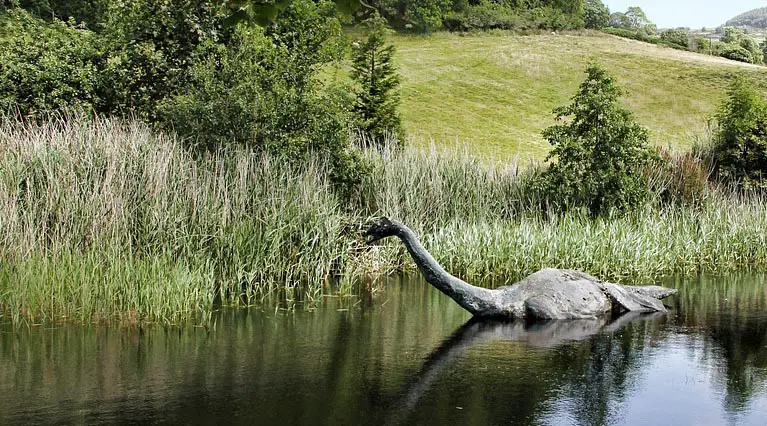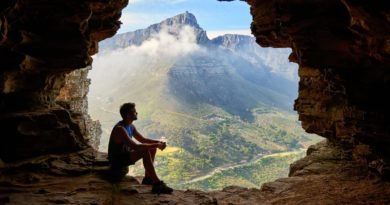Last modified on April 14th, 2020 at 5:20 am
Loch Ness Monster – Nessie Remains Found?
Although history of the Loch Ness Monster dates back nearly 1500 years, it is only somewhat recently that the legend we know today was born. Let’s take it back a few decades to May of 1933. Scottish newspaper Inverness Courier covered the first modern sighting of the aquatic big foot. A couple claimed to have spotted what could only be described as “an enormous animal rolling and plunging on the surface”. From that point forward, the Loch Ness Monster became a media hit.
Scholars have found dozens of references to The Loch Ness Monster, known as Nessie, in historical Scottish documents, and have published works about the findings. The oldest of these references dating back to 500AD where researchers found carvings of a large aquatic beast on stones near Loch Ness. So is Nessie real?
Loch Ness Itself:
Having the largest body of fresh water in all of Great Britain, Loch Ness is located in the Scottish Highlands, and reaches depths of up to 800 ft. While this is a far cry from the depths reached in our ocean, it still leaves room to wonder what may be lurking.
The actual body of water stretches about 23 miles. In 1933, the same year as the first modern sighting, a road was built along the stretch of lake, which allowed visitors to get a good look. After the first sightings made their way through headlines, tourism to the location understandably skyrocketed.
The Famous Photo:
The famous 1934 photograph of a strange creature taken by well renowned surgeon Robert Wilson seemed to have provided proof of the Loch Ness Monster. Wilson made claims to have taken the photograph in the early morning hours of April 19th, 1934 while on a drive along the Northern shores of the lake. For many decades to come, this photo has been the best evidence of a creature living in the depths of Loch Ness. The photo was later revealed to be a hoax in what has become a tradition of elaborate falsified images of the monster.
What was actually found?
In Early July of this year, USA Today reported “strange dinosaur-like remains that supposedly washed ashore on the banks of Loch Ness”
The apparent findings surfaced on June 29th, 2016, when an animal adoption organization in Scotland posted a photo to their Facebook page which depicted remains of what could only be assumed to be the Loch Ness Monster.
After an outburst on social media, some claimed to hold onto hope that the remains were real, especially after so many years of speculation. Others, not so much. As seen in the photo, all that remains are bones, and some internal organs. This is not a very realistic scene to wash ashore. It seems as though this one doesn’t have as much merit as some would like to believe, but does this mean that Nessie isn’t still out there?
What it should really look like
Back in 2013, a similarly monstrous creature washed ashore in New Zealand. After some research, the creature was found to be remains of a killer whale.
Notice the differences in the remains found in New Zealand, and those found on the shores of Loch Ness. A visible decay can be seen in the photo of the killer whale, while the photo of Nessie, all we see are bones and organs, an unlikely condition of a creature who genuinely found itself beached.
Google Joins the search
Now, anyone with an Internet connection can join the search for Nessie by utilizing Google’s street view. Of course, this doesn’t promise users a sighting of Nessie. However, it does provide a plethora of images for would-be monster hunters to scour.
To honor the 81st anniversary of the famous 1934 photo, Google mounted a camera to a boat, in addition to taking underwater photographs, and created a portrait of Loch Ness by stitching together the photos that were taken every 2.5 seconds.
In addition, Google teamed up with Adrian Shine, the man who is responsible for having examined more than 1,000 reports of monster sightings. “He helped us go through the imagery” reports Deanna Yick, program manager for Google’s street view team.
Okay, so the 2016 remains seem to be another hoax, but does that mean that the real Loch Ness Monster still might not be out there? Advances in technology like those provided by Google may help us squash the mystery once and for all.
I have been a nature enthusiast since I was a small girl. My background is in online marketing and website development. It only makes sense to merge my love for nature with my skills in online marketing to help spread awareness, and appreciation for Our Beautiful Planet.




